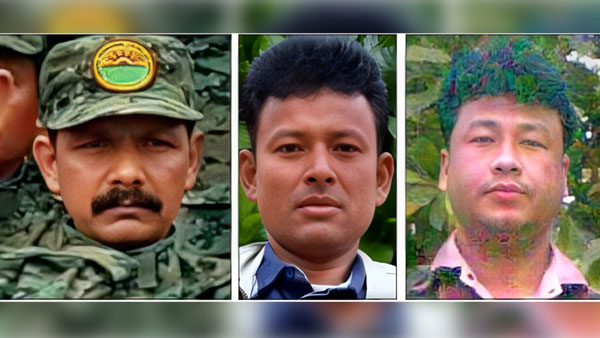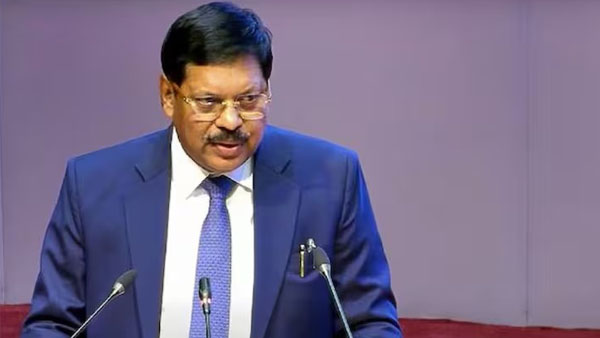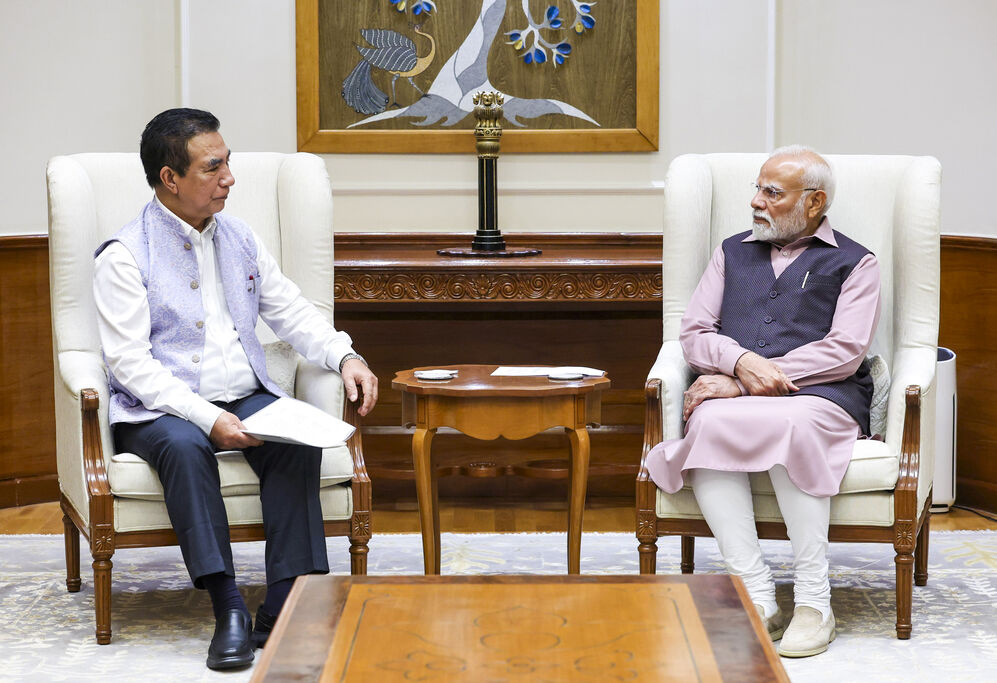By Dipak Kurmi
In the murky corridors of Northeast India’s insurgency theatre, July 13, 2025, could well be remembered as a watershed moment — not for its public proclamations, but for the deafening silence that followed. The banned militant group United Liberation Front of Asom–Independent (ULFA-I) has claimed that three of its top commanders were killed and at least 19 cadres injured in a series of deadly drone strikes on its camps inside Myanmar. The Indian Army, however, has officially denied any role, while the Assam Police and Chief Minister Himanta Biswa Sarma have distanced themselves entirely from the alleged cross-border offensive. Yet, despite the denials, what is emerging through unofficial sources paints a picture of precision warfare — silent, surgical, and strategically timed.
ULFA-I’s Claims and the Emerging Narrative
In a series of official communiqués emailed to the media on July 13, ULFA-I alleged that the drone attacks began around 2 a.m. and continued until 4:30 a.m., targeting their camps situated between Longwa along the Nagaland-Myanmar border and the Pangsau Pass along Arunachal Pradesh. According to the outfit, these assaults resulted in the deaths of three senior commanders: self-styled Lieutenant General Nayan Asom (real name Nayan Kalita alias Nayan Medhi), Brigadier Ganesh Asom, and Colonel Pradeep Asom. Nineteen cadres were injured in the strikes.
Interestingly, the outfit claimed that the drone strike which killed Ganesh Asom and Pradeep Asom occurred during the funeral of Nayan Asom. It also alleged that the drone attack employed Israel- and France-made unmanned aerial vehicles (UAVs), and that civilian casualties had occurred as a result of the operations. Further, the group stated that the camps of other insurgent outfits, including the People’s Liberation Army (PLA) and NSCN-K (Khaplang), were also affected by the aerial bombardment. The ULFA-I vowed revenge and branded the strikes as “cowardly acts by the Indian occupational forces.”
Official Silence and Strategic Ambiguity
While ULFA-I’s statement was categorical in blaming Indian security forces for the attack, Indian Army spokesperson Lieutenant Colonel Mahendra Rawat told The Indian Express that there were “no inputs with the Indian Army on such an operation.” Echoing this stance, Assam Chief Minister Himanta Biswa Sarma said that no operation was conducted from Assam’s soil and denied the Assam Police’s involvement. “Usually when such incidents take place, there is a statement from the Indian Army but they have not issued it yet. Maybe there will be more clarity on this later,” Sarma told reporters.
Despite official denials, sources familiar with military operations in the region suggest a very different story. Speaking on condition of anonymity, individuals in the Indian defence establishment stated that the attacks were in fact launched by a highly skilled technical team operating from forward areas of the Rangapahar-based 3 Corps. Over 100 drones reportedly targeted two major ULFA-I installations: the ‘Diamond Camp’ near Hoyat village and the ‘central mobile headquarters’ at Waktham in Myanmar. These areas are located just 10–15 km from the India-Myanmar border — a short aerial distance for high-end combat drones capable of carrying precision-guided munitions.
Sources also said that the operation was pre-emptive, carried out after reconnaissance had identified a renewed buildup of ULFA-I activities, particularly by the now-deceased commanders who had recently been sighted in Mon district of Nagaland. Reports suggested that these operatives were planning a major assault in Assam. In such a context, the strikes could be seen as a preventive neutralisation of imminent threats.
The Background: ULFA-I’s Operational Base in Myanmar
The ULFA-I, led by the elusive Paresh Baruah, has long operated from the ungoverned forested regions of Sagaing and Kachin in northwestern Myanmar. Its major base clusters include the Arakan Camp near Lahon in Nanyun Township — a joint installation shared with other Northeast Indian insurgent groups like the PLA, UNLF (Koireng), and NSCN-K — and another camp near Hakhi, close to the Pangsau Pass. The present strength of ULFA-I is estimated to be between 250 and 400 fighters, though operational numbers fluctuate depending on recruitment and counter-insurgency pressure.
The drone strikes reportedly targeted camps that were not only home to ULFA-I cadres but also in proximity to other groups such as the NSCN-K’s Angmai faction and the NSCN-IM’s ‘Veda Peace Mission Command’. Whether these other outfits suffered collateral damage is unclear, but the geographic overlap raises the likelihood of unintended fallout.
Who Was Nayan Asom?
Among the three commanders killed, Nayan Kalita — known in militant circles as Nayan Medhi or Nayan Asom — stands out as a symbolic figure. Hailing from Dumuria village in Assam’s Bajali district, Nayan was reportedly a brilliant student who vanished in 1989 after completing his higher secondary education. Before leaving, he wrote a note asking his elder brother to delete his name from the family records. His last known contact with the family was in 1998.
On July 13, shortly after the news of his death broke, villagers gathered at his ancestral home in Dumuria. His death marks one of the highest-profile militant casualties in recent years, especially after the 2019 Myanmar Army-led crackdown on Indian insurgents under “Operation Sunrise,” which had forced many outfits, including ULFA-I, to scatter and reorganise.
Media Under Fire
In its third press statement issued on July 13, ULFA-I lambasted Assamese media outlets for allegedly relying on “transcripts provided by the occupying forces of the colonial Indian state.” In a scathing remark, the outfit said that such reporting driven by “business interests” was a betrayal of journalistic integrity and accused certain media organisations of echoing the state narrative without verification. This tactic — discrediting the press — appears to be part of a larger strategy to rally ideological support and provoke sympathy among local populations.
A Continuation of a New Tactical Doctrine?
If confirmed, this would not be the first time that drones were used against ULFA-I positions inside Myanmar. On January 8, 2024, the outfit had claimed that a drone strike by Indian forces had caused minor injuries to two of its cadres. That incident, however, did not draw as much attention, nor did it result in any confirmed fatalities. The current operation, by contrast, suggests a potential shift in India’s counter-insurgency doctrine — from traditional boots-on-ground operations to precision drone warfare, conducted with plausible deniability.
The use of French and Israeli drones, as claimed by ULFA-I, adds a layer of geopolitical intrigue. Both countries have defence partnerships with India, and the Indian Army is known to operate Heron and Searcher drones of Israeli origin, as well as loitering munitions with strike capabilities. The operational efficiency demonstrated — striking multiple camps in difficult terrain, reportedly during funeral rites, and causing high-value casualties — further indicates the involvement of elite special operations teams and robust intelligence infrastructure.
Strategic Implications and Future Trajectory
While the Indian Army’s silence could be interpreted as a tactical decision to maintain diplomatic ambiguity — especially with Myanmar’s military junta already under international scrutiny — the larger message is clear: cross-border sanctuaries for insurgents are no longer safe. The continued instability in Myanmar has created a security vacuum exploited by Northeast Indian insurgent groups for shelter, recruitment, and training. But as this incident suggests, even remote jungle camps may not guarantee immunity from precision warfare.
This undeclared drone offensive also sends a signal to other militant outfits in the Northeast — including NSCN-K, PLA, and UNLF — that Indian security forces are willing to conduct proactive, pre-emptive strikes if actionable intelligence is available. At the same time, the lack of official acknowledgement keeps the state insulated from diplomatic backlash and international legal complications.
A Shadow War Unfolds
The July 13 drone strike — whether officially confirmed or not — marks an escalation in India’s counter-insurgency tactics. The ULFA-I’s dramatic loss of three senior leaders, their emotional appeal for revenge, and their denunciation of the media reveal the psychological and organisational damage inflicted. Meanwhile, the Indian state’s strategic silence allows room for plausible deniability while still achieving its objectives: degrading militant leadership, disrupting future plans, and asserting control over restive borderlands.
What emerges is a shadow war — not waged through loud declarations or televised operations, but through stealth, precision, and denial. And in this theatre, where insurgency and ideology collide with drones and data, the truth may remain elusive, but the consequences are undeniably real.
(the writer can be reached at dipakkurmiglpltd@gmail.com)




